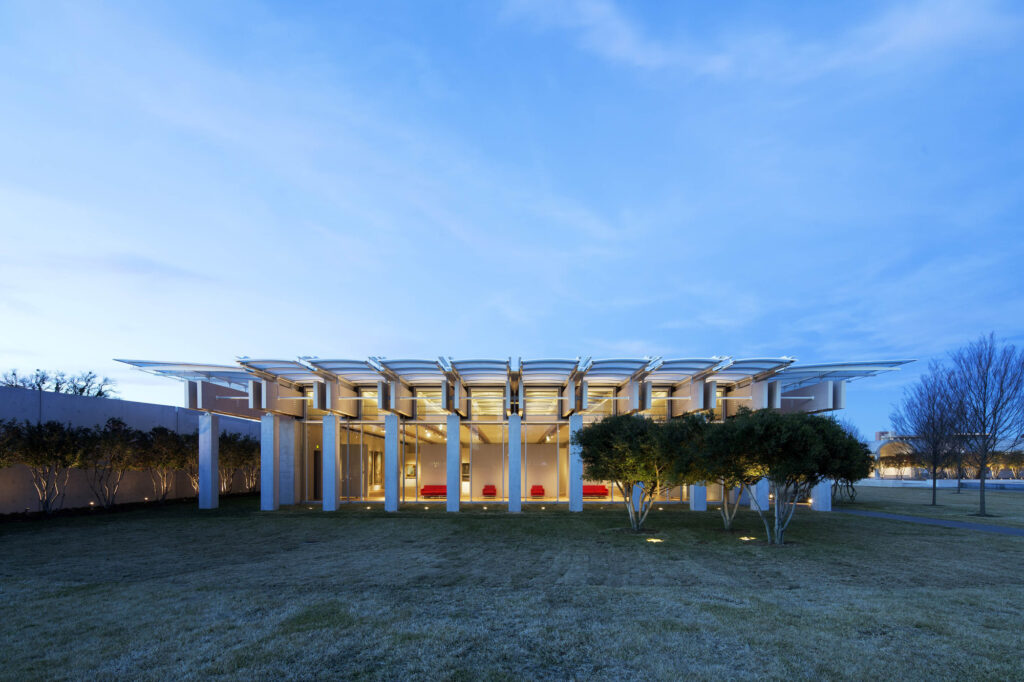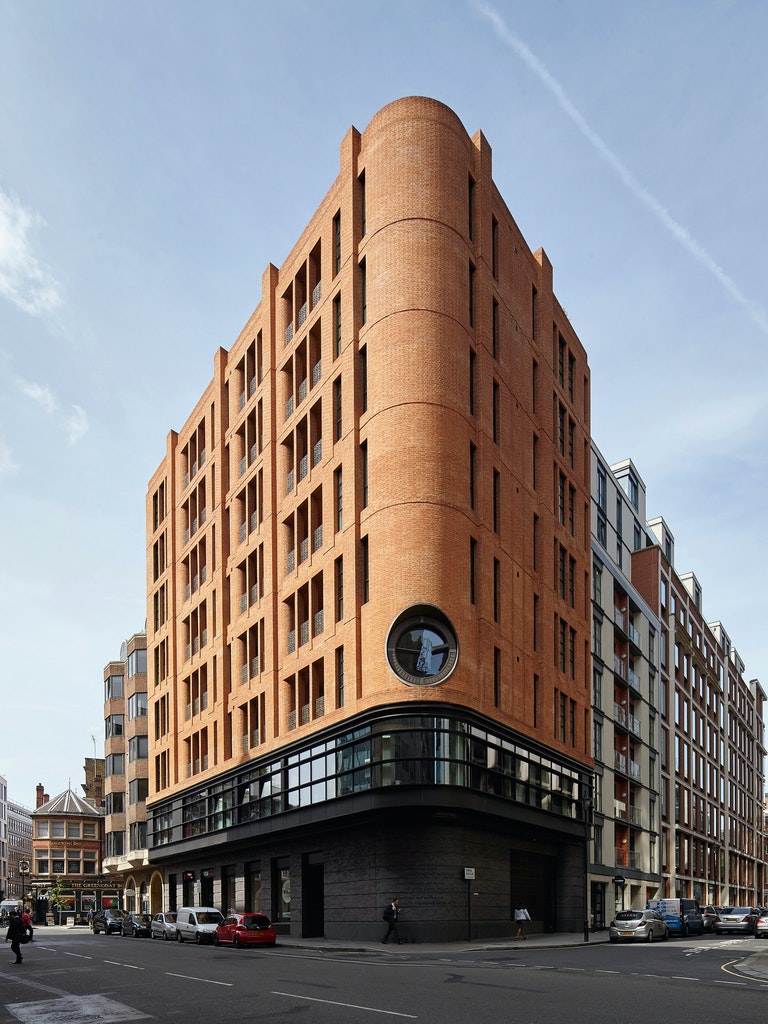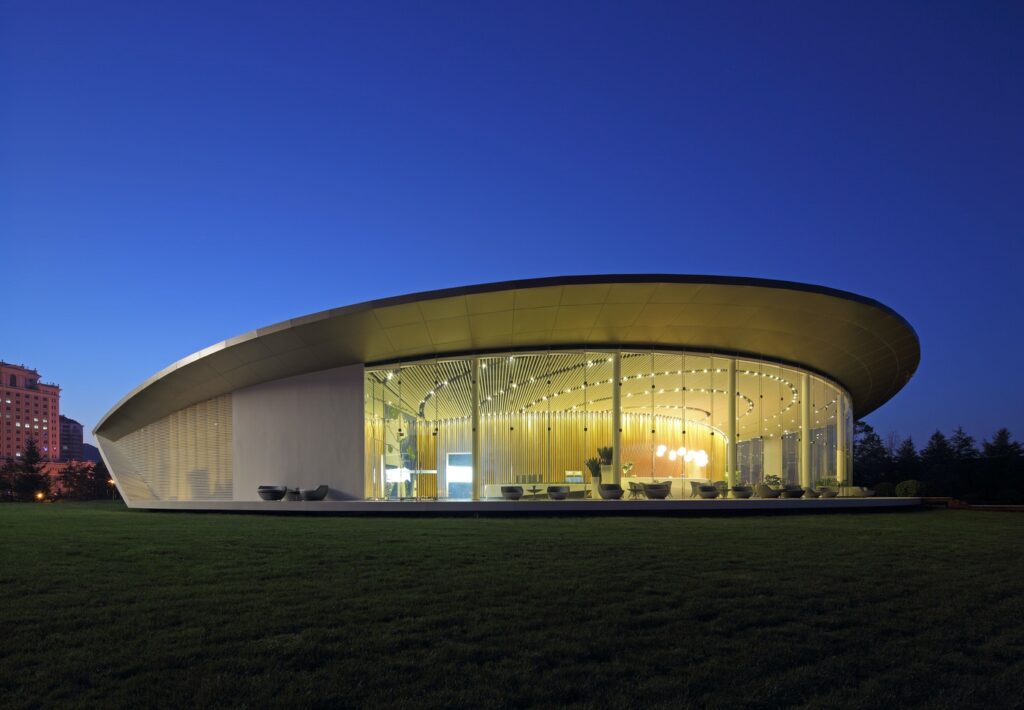
The Renzo Piano Pavilion was a 2013 addition to the Kimbell art museum, a separate building from the original 1972 Louis Kahn building. Own it’s own, I appreciate the architecture and the functionality of the Renzo Piano Pavilion, yet, across the lawn from the original Kahn building, I find that the Renzo Piano Pavilion detracts from the awe of a building crafted by one of the least prolific, yet most talented architects of all time. While the Piano Pavilion has elements of the original Kahn building, such as concrete with visible dents from where the support bars once were, the Pavilion lacks the uniqueness that the Kahn building provides. This Pavilion is important to me because each time I visit the Kimbell, I am reminded of what was once an expansive lawn. I notice people entering the Kahn building through the unintended entrance, exiting through the intended entrance, and across the lawn straight to the Pavilion. People are no longer spending time in the Kahn Building. Now, the Kahn building serves as a place for the permanent collection, and the visiting exhibits are all hosted in Renzo Piano Pavilion. Recently, I went to see a Renoir exhibit, and to my sadness, it was on display in the Renzo Piano Pavilion.











